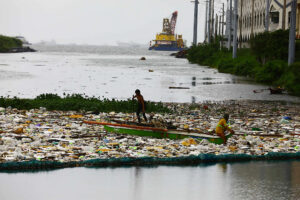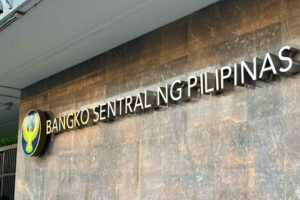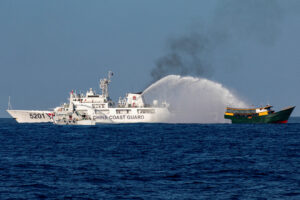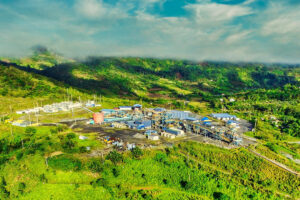Manila Bay’s comeback: Hope rises from the water

On April 23, the Environment Committee of the Management Association of the Philippines (MAP), in partnership with the Department of Environment and Natural Resources (DENR), held its fourth Webinar on the Manila Bay Rehabilitation Program. The featured speakers Jacob F. Meimban, Jr., Executive Director of the DENR’s Manila Bay Coordinating Office, shared interesting updates on what may be one of the country’s most ambitious environmental turnarounds.
The Webinar, part of a 2024 MAP-DENR MOU, marks MAP’s growing commitment to supporting environmental awareness among business leaders. And the message is clear: Manila Bay isn’t just being cleaned — it’s being reborn.
Spanning three regions and 187 local government units (LGUs), Manila Bay isn’t just the strip of coastline along Roxas Boulevard; it’s a lifeline for nearly 40 million Filipinos. Fed by 17 major rivers — including the storied Pasig River — the bay had long been burdened by pollution, informal settlements, and mismanaged waste.
Once synonymous with pollution and neglect, Manila Bay is now at the heart of an ambitious environmental transformation. The effort to rehabilitate Manila Bay is underpinned by a landmark Supreme Court ruling known as the “Mandamus Order,” which directed 13 government agencies to clean up and rehabilitate the bay to make it safe for recreational use, such as swimming and skin diving. To accelerate this mandate, Administrative Order (AO) No. 16, s. 2019 was issued, formally creating the Manila Bay Task Force (MBTF). This body coordinates all rehabilitation initiatives and ensures accountability across participating agencies.
The Manila Bay Rehabilitation Program is structured around several key components:
1. Liquid Waste Management
To address the rampant water pollution affecting Manila Bay, the government has prioritized the construction of sewage treatment plants (STPs) in strategic urban areas, particularly within the National Capital Region (NCR). These facilities play a crucial role in filtering wastewater before it reaches the bay.
Private sector partners, especially Maynilad Water Services and Manila Water Co., have significantly supported this initiative. Both concessionaires have invested heavily in advanced wastewater treatment technologies and infrastructure, aiming to expand sewer coverage and reduce untreated discharge into waterways. Their efforts include:
• Participating in DENR’s Adopt-an-Estero program, where water is being cleaned before discharging it to Manila Bay.
• Expanding and modernizing sewage and septage treatment facilities to comply with environmental standards.
• Introducing innovative technologies, such as biological nutrient removal systems and automated monitoring systems, to improve efficiency and water quality outcomes.
• Deploying experts and technical teams to support system upgrades and operations.
These investments are aligned with the General Effluent Standards under AO No. 2016-08, which the DENR strictly enforces to ensure compliance from both private and public sector stakeholders.
2. Solid Waste Management
Solid waste is another persistent issue, tackled through desilting operations in critical rivers and esteros, as well as trash mitigation projects. These include the deployment of 24 backhoes to retrieve submerged waste and the use of trash boats and traps to capture floating debris. Regular clean-up drives involving government agencies and local communities bolster these efforts, enhancing public awareness and participation.
It is also important to mention that LGUs play a critical role in the success of the Manila Bay Rehabilitation Program. With 187 LGUs traversing the Manila Bay watershed, their commitment to sustainable practices, local enforcement, and community engagement is essential.
To recognize and incentivize these efforts, the Galing Pook Foundation — in partnership with the Department of the Interior and Local Government (DILG) — has included Manila Bay-related programs in its prestigious Galing Pook Awards. These awards honor LGUs that have demonstrated innovative, inclusive, and sustainable practices aligned with the goals of the rehabilitation program.
These award-winning initiatives not only showcase model practices but also inspire replication across other cities and municipalities in the Manila Bay Region.
3. Informal Settlers and Illegal Structures Management
One of the most challenging issues is the relocation and resettlement of informal settler families (ISFs) living along waterways. Once cleared, these areas are being transformed into linear parks to prevent the re-emergence of illegal structures and promote green public spaces. However, this entails an estimated budget of P500,000 to resettle each ISF.
4. Habitat and Ecosystem Restoration
Efforts to rehabilitate ecosystems within Manila Bay include the protection and reforestation of mangrove areas and the development of ecotourism sites. The Department of Agriculture’s Bureau of Fisheries and Aquatic Resources (DA-BFAR) also actively monitors fish catch in eight designated landing sites, providing data on marine life health and supporting sustainable fishing practices.
5. Manila Baywalk Dolomite Beach
Among the most visible symbols of change is the Manila Baywalk Dolomite Beach. Though initially controversial, it has become a destination for over 4 million local and foreign visitors. Director Meimban’s presentation highlighted the stark difference of the Manila Bay Boardwalk from 2019 to 2024, where the 2019 picture showed a sea of trash while the 2024 picture showed a clean, beautiful beach with tourists. It was indeed a pleasant surprise to know that marine life has returned, and the beach now hosts environmental tours, coastal clean-ups, and research activities, transforming it into a platform for public engagement.
LOOKING AHEADThe Manila Bay Rehabilitation Program is a herculean endeavor that illustrates the challenges and possibilities of environmental restoration in a densely populated urban setting. It emphasizes the importance of strong inter-agency and public-private sector collaboration, legal mandates, and community involvement. While much work remains, the progress to date — evidenced by cleaner waters, returning marine life, and growing public engagement — shows that Manila Bay is on the path to renewal.
As the program continues, the dream of a swimmable, sustainable, and vibrant Manila Bay is slowly but surely becoming a reality.
Reza Dadufalza-Goyeneche is the co-vice-chair of the MAP Environment Committee. She is also the head of Trade of the Royal Danish Embassy, Manila.




